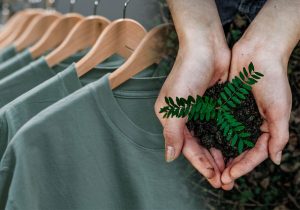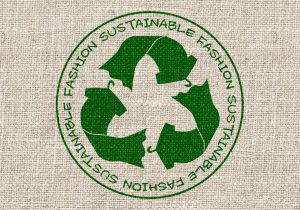Introduction
The fashion world is in the midst of a deep change as consumers more and more sense the environmental and social consequences of their purchases. Sustainable fashion is no longer a fringe phenomenon – it's an essential part of the dialogue regarding how we live and what we care about. This blog explores the ethics of sustainable fashion, why it is important, and how you can truly make a difference in your own style choices. By adopting sustainability, not only do you help make the world a healthier place, but you also bring with it a deeper relationship with your clothes and the stories behind them.
Understanding Sustainable Fashion
Sustainable fashion is a broad concept of practices that work towards minimizing the negative influence of clothing consumption and production. It's about making people-planet-pros no-compromise choices. Sustainable fashion ultimately reduces the fast fashion business model, where quick decisions are made focusing on cheap prices and fast production, usually at the cost of ethical labor conditions and environmental well-being.
Sustainable fashion challenges us to change the way we purchase, use, and maintain our clothes. Sustainable fashion calls for a synergy that takes into account the complete life cycle of a garment – raw materials through manufacturing, transport, use, and ultimate disposal or recycling. Such a paradigm shift is critical in the development of a fashion business that values natural resources and human respect.
Core Principles of Sustainable Fashion
Ethical Production
Ethical production is ensuring decent wages, safe working environments, and respect for workers' rights along the supply chain. Most garment workers, particularly in developing nations, experience exploitation, excessive working hours, and unsafe working conditions. Patronizing brands that advocate ethical labor practices assists in lifting communities as well as advancing social justice.
Eco-Friendly Materials
Sustainable fashion prefers the utilization of organic, recycled, or low-impact materials. Organic cotton, hemp, linen, and Tencel are some materials that are cultivated with low pesticides and water consumption. Recycled materials minimize waste and virgin resource needs. The selection of eco-friendly materials decreases pollution and protects biodiversity.
Longevity
Creating clothing that will last – in style and in quality – is a foundation of sustainability. Fashionable designs with excellent construction allow clothes to be worn for decades, lowering the replacement frequency and amount of textile trash.
Transparency
Transparency entails brands making their supply chains, manufacturing processes, and environmental performance transparent. This transparency enables customers to make informed choices and compels businesses to uphold good and sustainable practices.
The Environmental Consequences of Fast Fashion
Fast fashion's quick production cycles and throwaway culture have created dramatic environmental problems: Waste: Billions of tons of clothing wind up in landfills annually, often because clothes are produced at a low cost and discarded rapidly. Resource Consumption: The fashion world is among the biggest users of water and energy in the world. To illustrate, making a single cotton t-shirt can take more than 2,700 liters of water. Pollution: Chemicals and dyes employed in fashion manufacturing poison waterways and land, causing damage to ecosystems and human health.
Such effects emphasize the imperative to transition to more sustainable approaches to fashion.
How to Adopt Sustainable Fashion
1. Buy Less, Choose Well
Rather than packing your closet with the latest fashions that might be used a handful of times, prioritize quality over quantity. Spend money on items that will last long-term, both in style and wear. Not only does this minimize waste, but it also allows you to create a more personal and meaningful wardrobe.
2. Check for Certifications
Look for brands that employ certified organic or recycled content and for brands that are open about how they make their products. Certifications like GOTS (Global Organic Textile Standard), Fair Trade, and OEKO-TEX guarantee that products are held to high environmental and social standards.
3. Take Care of Your Clothes
Proper care through washing, storing, and repairing can greatly increase the lifespan of your clothes, minimizing replacement needs. Simple measures such as washing clothes in cold water, drying them in the sun, and using mild detergents maintain fabric integrity. Basic sewing techniques to repair minor tears or replace buttons also help towards sustainability.
4. Support Ethical Brands
Select brands that have a focus on equitable labor practices and environmental sustainability. Most brands now have a focus on creating a positive social impact through their business model, such as through the use of renewable energy, reduction in packaging waste, or contribution to community programs. By buying from these brands, you're promoting the industry to follow better practices.
The Role of Minimalism in Sustainable Fashion
Minimalism in fashion is about curating a wardrobe of pieces you truly love and wear often. It's not about deprivation but about intentionality and mindfulness. A minimalist wardrobe can help reduce decision fatigue, save money, and lessen your environmental impact by focusing on versatility and quality.
Minimalism requires you to question essential things prior to buying: Do I actually need this? Will I wear it more than once? Does it complement my current wardrobe? This careful consideration serves to disrupt the trend of impulse shopping and waste.
The Ripple Effect of Conscious Choices
Each buy is a vote for the type of world you wish to inhabit. You're supporting a culture that prioritizes people and planet over profit when you choose sustainable fashion. Your buying can shape brands to make better choices, inspire others to buy with intention, and ultimately change the industry in a positive way.
Additionally, sustainable fashion promotes greater appreciation for the craftsmanship and history that goes into every garment. This relationship converts apparel from disposable products to treasured items, instilling care and respect.
Beyond Apparel: Sustainable Fashion as a Lifestyle
Sustainable fashion fits within a larger conscious living wave, encompassing mindful consumption in every aspect of our lives. It encourages us to consider how our daily lifestyles – what we consume, how we get around, and how we deal with the environment – are affecting the world around us.
By embracing sustainable fashion practices, you develop a sense of respect, responsibility, and appreciation. This path usually takes you to learning new methods of waste reduction, promoting local artists, and fostering creativity via upcycling or swapping clothes.
Best Sites to Buy Sustainable Clothing from:
Everlane
Patagonia
These are our favorite sites to choose from, but if we talk about one brand that we adore for its quality, then Eileen Fisher is the one for us. But make sure to check out and explore your options from the mentioned heroes; which one is your favorite?
Conclusion
Sustainable fashion is a path, not a destination. It's about making smarter choices, step by step. Whether you're looking for ethical brands, repairing your clothes, or just buying less, every action counts. Collectively, we can make fashion more conscious and kinder—a fashion industry that respects the earth, cares for workers, and adores simple style.
Embracing sustainable fashion is empowering. It lets you live your values through your wardrobe, and every outfit becomes a declaration of intention and care. With each person who joins this movement, the cumulative effect increases, opening the door for a healthier, more just future. So start small, be curious, and wear your values on your sleeve.
Shop Now





